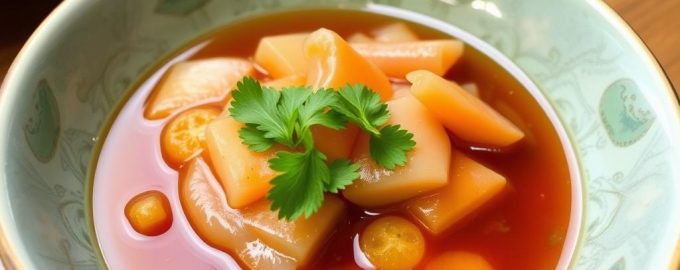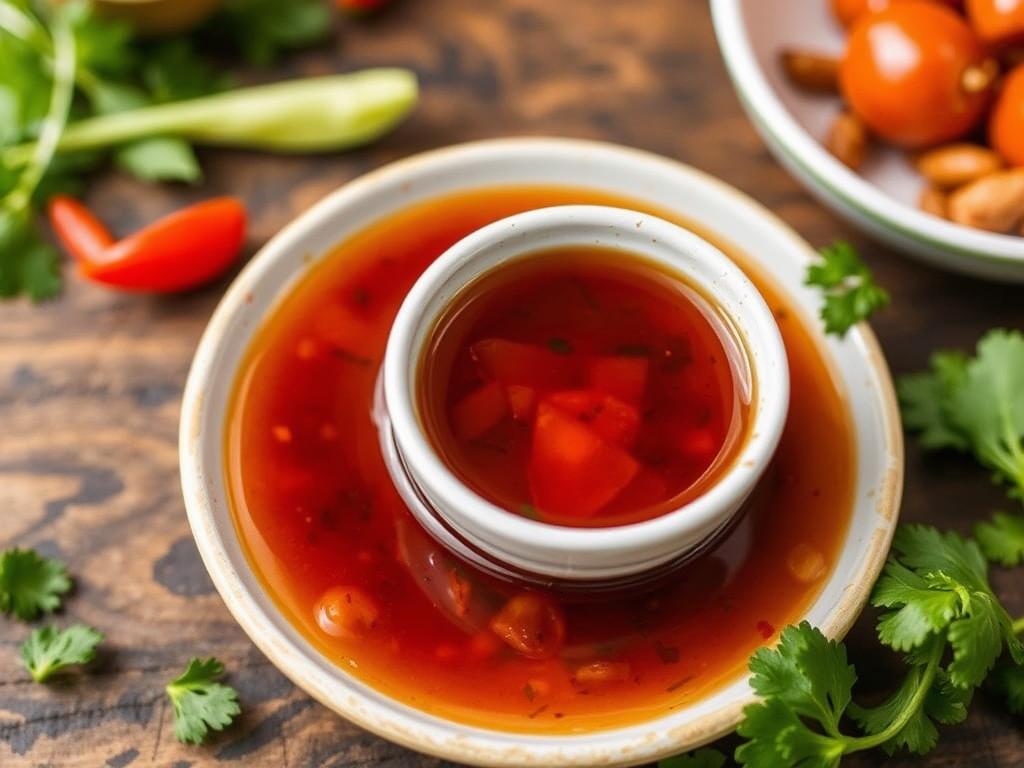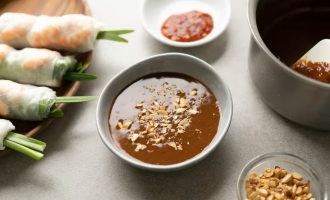Vietnamese cuisine is cherished for its bold flavors, fresh ingredients, and unique balance of sweet, salty, and sour. One of the cornerstones of this celebrated cuisine is fish sauce, or nuoc mam, a fermented condiment that adds depth and umami to countless dishes. Whether drizzled over a bowl of pho, mixed into a zesty dipping sauce, or simply used to season a stir-fry, the role of fish sauce in Vietnamese cooking cannot be overstated. In this article, we will delve deep into the history of fish sauce, explore its origins, break down a top-rated fish sauce recipe, discuss its nutritional value, and provide cooking recommendations along with variations that can enhance the flavor profile of your dishes. Prepare to embark on a culinary journey that celebrates one of Vietnam’s most beloved ingredients.
A Glimpse into the History of Fish Sauce
Fish sauce has a rich history that dates back thousands of years, with its origins believed to trace back to ancient Southeast Asia. Originally used to preserve fish, the process of fermentation made it possible to create a flavorful condiment from this common protein source. Over time, different cultures began to implement their own variations of fish sauce based on local tastes and available resources. The Vietnamese version, known as nuoc mam, is significantly influenced by traditional fermentation methods that have been perfected over generations. This sauce became not just a means of preservation but a pivotal flavor enhancer in Vietnamese gastronomy. By the 15th century, different provinces in Vietnam started to establish their own unique styles of fish sauce, leading to the diverse range of flavors and aromas we see today. Traditionally, fish sauce was made using whole fish, primarily anchovies, which were layered with sea salt and left to ferment in barrels for extended periods. The end result was a liquid amber elixir that was both pungent and savory, an essential component of many dishes beyond borders. Today, various brands and artisanal producers across Vietnam continue to uphold these traditional methods, ensuring that the authenticity and flavor of nuoc mam lives on.
The Place of Origin of Fish Sauce
Fish sauce, while embraced in various forms around the world, has a deep-rooted connection to Southeast Asia, specifically Vietnam. In the coastal regions of Vietnam, particularly in places like Phu Quoc Island, fish sauce production flourishes. The island is renowned for its production of high-quality nuoc mam, made from the freshest catch of anchovies and sea salt. Phu Quoc’s unique climate and geographical location provide an ideal environment for the fermentation process, ensuring an exquisite final product rich in flavor and aroma. The fish sauce from this region is often praised for its delicate balance between sweetness and saltiness, making it a staple in both local kitchens and international markets. As travelers flock to Vietnam, they are often eager to sample authentic nuoc mam or bring some back home, a testament to its undeniable importance in Vietnamese culture and cuisine.
Key Ingredients in the Best Vietnamese Fish Sauce Recipe
To craft an authentic Vietnamese fish sauce, the following ingredients are essential:
| Ingredient | Quantity | Unit of Measurement |
|---|---|---|
| Anchovies (fresh or salted) | 1 | kg |
| Sea salt | 350 | g |
| Water | 500 | ml |
| Sugar (optional, for sweetness) | 50 | g |
The primary ingredients—anchovies and sea salt—create the basis for the fermentation process. The water is crucial for diluting the salt and helping to extract flavors from the fish. While sugar is not strictly necessary, it can add a hint of sweetness to balance the salinity in your sauce.
Nutritional Value of Fish Sauce
Understanding the nutritional value of fish sauce is essential, especially if you’re keeping track of your dietary intake. Below is the average nutritional breakdown for a typical serving of Vietnamese fish sauce (per tablespoon):
| Nutrient | Value |
|---|---|
| Calories | 10 |
| Protein | 1 g |
| Fat | 0 g |
| Carbohydrates | 2 g |
Due to its potent flavor, fish sauce is typically used in small quantities, making it a low-calorie food option. While it contributes to your overall sodium intake, its rich umami flavor means receptors in your mouth are satisfied even with lesser amounts used in recipes, helping to maintain a balanced diet.
Step-By-Step Cooking Instructions
Crafting homemade Vietnamese fish sauce is a delightful but somewhat lengthy process. Here’s a detailed step-by-step breakdown of how to create your fish sauce.
**Step 1: Gather Your Ingredients** Ensure that all your ingredients—anchovies, sea salt, and water—are fresh and of good quality. This will influence the taste and quality of your fish sauce.
**Step 2: Prepare the Fish** If using fresh anchovies, clean them thoroughly, removing the innards and heads. If using salted anchovies, give them a good rinse to lower the saltiness level.
**Step 3: Layer the Anchovies and Salt** In a large glass or ceramic container, alternate layers of the anchovy fillets with sea salt. Start with a layer of salt at the bottom, then a layer of anchovies, and repeat until the container is full. The top layer should be salt.
**Step 4: Add Water** Gradually pour water over the layered mixture. The salty solution will help extract the umami flavors from the fish.
**Step 5: Ferment** Cover the container with a clean cloth and place it in a cool, shaded area. Let the mixture ferment for at least 6 months; traditional recipes may go up to a year.
**Step 6: Strain and Bottle** Once fermentation is complete, carefully strain the liquid through a fine sieve or cheesecloth into a clean glass bottle, discarding the solids.
**Step 7: Optional Flavoring** If desired, mix in some sugar for added sweetness and balance.
**Step 8: Store Properly** Seal the bottle tightly and store it in a cool, dark place; the flavor will continue to develop over time.
Cooking Time and Portions
The hands-on preparation of the fish sauce takes only a few hours, but the real magic happens during the fermentation stage. The entire process, from preparation to culmination, typically spans over six months to a year, as mentioned earlier. However, if you’re looking for a refreshing sauce to use immediately, many recipes for a quick dipping sauce using store-bought fish sauce take just a few minutes to prepare. In the end, this recipe typically yields around 1 liter of fish sauce, which will provide you with numerous servings for various dishes.
Cooking Recommendations and Variations
An essential piece of advice when making fish sauce at home is to pay attention to the quality of your ingredients. Opt for high-quality anchovies and salt, as these are the building blocks of your sauce. If you’re feeling adventurous, consider incorporating other ingredients such as:
1. **Chili Peppers**: For those who enjoy a kick, add chopped chili peppers during fermentation. This will yield a spiced fish sauce that adds heat to your dishes.
2. **Garlic**: Cloves of garlic can provide additional depth and sweetness, resulting in a more complex flavor profile.
3. **Lime Zest**: Adding lime zest can introduce a bright, zesty note that complements the umami flavor of the fish. When using your fish sauce in cooking, perhaps experiment with different recipes. It mixes wonderfully into marinades, vinaigrettes, and stir-fries. Do not hesitate to adjust the ratio of fish sauce to other ingredients based on your palate. Remember that this sauce can also serve as a base for a savory dipping sauce. Simply combine equal parts fish sauce, lime juice, and sugar with minced garlic and sliced chili for a splash of vibrant flavor.
Conclusion
In summary, making your own Vietnamese fish sauce is a rewarding endeavor that connects you with the rich traditions of Vietnamese cuisine. As we’ve explored its history, origins, and specific preparation methods, it’s clear that this condiment elevates your cooking game and enhances the flavors of any dish. By following the best Vietnamese fish sauce recipe outlined in this article, you will not only develop a delicious sauce but also a deeper appreciation for the culinary arts and the unique flavors that define Vietnamese food. Embrace the fermentation process, explore variations, and discover how this versatile ingredient can transform your meals into extraordinary dining experiences. Happy cooking!
Discover the perfect Vietnamese fish sauce recipe that enhances your dishes with authentic flavor. Try it today for a delicious culinary experience!








